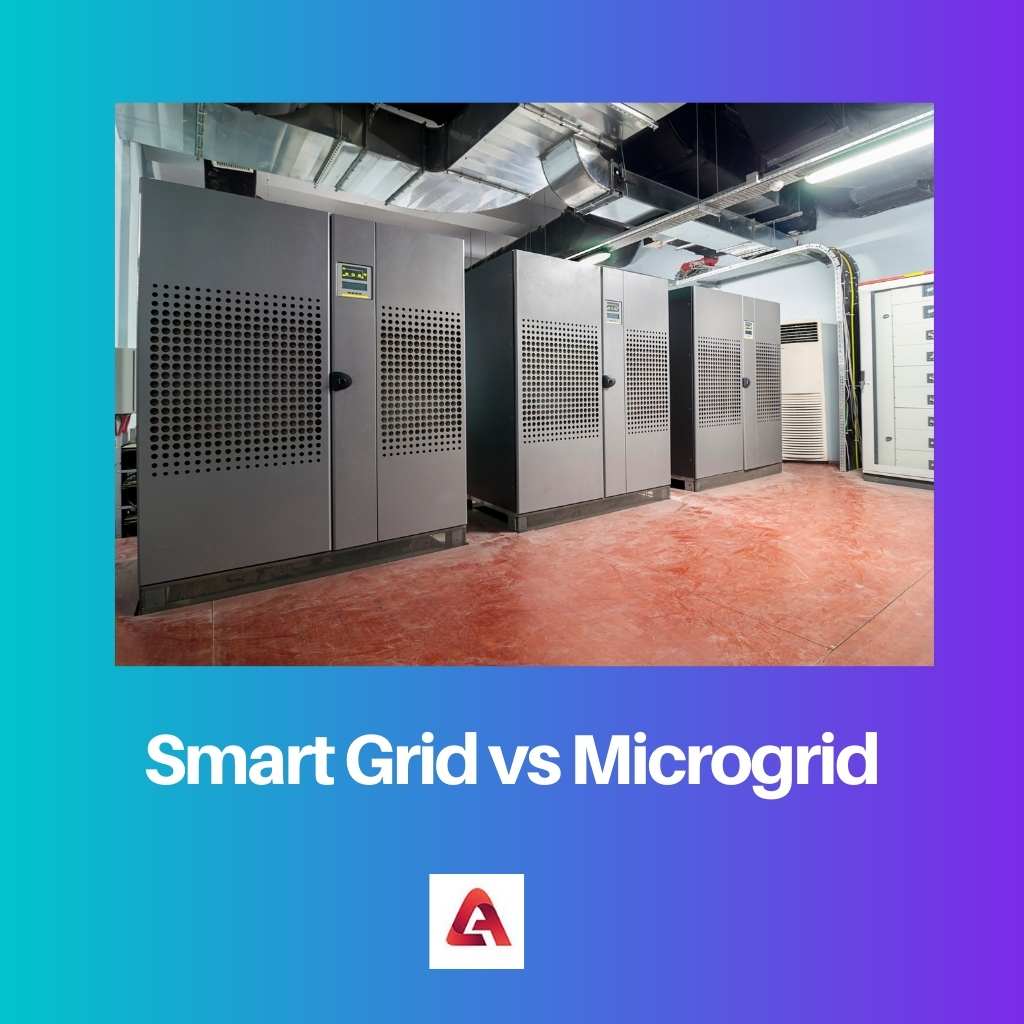Smart grids and microgrids are two different kinds of electrical systems used in modern technologies. Both the systems have many applications in the modern world.
They have many disadvantages and advantages. Both the grids provides essential features for two-way electricity communications. It is vital to get knowledge about the smart grid and microgrid.
Key Takeaways
- Grids are smaller, localized energy systems operating independently or in conjunction with the main power grid.
- Microgrids provide increased resilience and energy security by functioning autonomously during grid outages or emergencies.
- Smart grids optimize energy consumption and distribution using real-time data, while microgrids enable localized energy generation and storage.
Smart Grid vs Microgrid
The difference between the smart grid and microgrid is that the smart grid is a large-scale power supply network. The smart grid is designed to work on large community power supply technology. On the other hand, a microgrid is a small-scale power supply network. The microgrid is designed to work in small community areas. But both the network is highly distributed network.

The smart grid is an electric grid that has various operations and energy measures. The primary function of the smart grid is to provide electricity through two-way digital communication.
The smart grid works based on digital technology. The smart grid help to analyze, control, and monitor communications. The smart grid works within the supply chain and improves efficiency effectively.
The smart grid can greatly reduce the cost and maximize the transparency of the supply chain. To overcome the weakness of conventional grids, the smart grid is introduced. Smart net meters are used in the smart grid.
A microgrid is a decentralized electricity group. The microgrid can work with the macro grid. The microgrid can function autonomously in island mode.
The island mode is the unique feature of the microgrid. The microgrid can change the powers between the island and connected modes. By changing the modes, it provides security to the supply.
Off-grid is the use case of the microgrid which is called autonomous. The off-grid can work stand-alone or isolated microgrid. Microgrids are the best source of local energy where the transmission is centralized.
Comparison Table
| Parameters of comparison | Smart Grid | Microgrid |
|---|---|---|
| Means | A smart grid is the number of microgrids | A microgrid is the subset of a smart grid |
| Other names | Smart macro grid | Small smart grid |
| Devices | Electrical grid and sensors | Interconnected loads and DER |
| Scale | Large scale | Small scale |
| Types | Two | Three |
What is Smart Grid?
Smart grids are a growing technology with many advantages. Many countries encourage smart grid technology for its knowledge of dealing with global warming and energy independence scenarios.
The smart grid has an advanced metering infrastructure in which fiber optic routers are used for more efficiency. It also has smart distribution roads and circuit breakers.
The smart home controls speak about the smart grid effectively.
Some important aspects of the smart grid are electronic power conditioning and control of production.
The smart grid technology shows the technical infrastructure of the electricity services. Smart meters have many security issues which are needed to be concerned.
The data flow in the smart grid has happened through digital communication technology. The smart grid has self-healing properties like it can detect, act and react to problems.
It can solve multiple issues at the same time. A company with many It resources is going with a smart grid for better solutions.
Smart grid has many modern applications. In a hybrid car, the smart grid plays a vital role to charge the vehicle. The primary goal of the smart grid is to maximize the throughput of the electricity system with reduced energy sources.
Energy-saving, fraud detection, better customer service, and reduced cost are some benefits of the smart grid.

What is Microgrid?
Microgrids are known for their centralized source. A microgrid is a good option for rural areas. A small geographical island can work better with a microgrid.
The distribution generation and renewable energy are the integrated sources of the microgrid. The major disadvantage of the microgrid is controlling and protecting the system.
The low-short circuit levels are challenging services in the microgrid system. It is difficult to protect the low short circuit services.
Microgrid provides multiple energy needs for the system. It provides heating and cooling beside the electricity. Microgrid shows high energy utilization. The penetration of local energy can be done by microgrids.
The community microgrids are responsible for the local energy supply for thousands of customers. The community microgrid has centralized energy sources. The centralized microgrids have both AC and DC converters.
A bi-directional electronic converter is also present in the microgrid.
There are five types of microgrids is available. They are campus environment microgrids, community microgrids, remote off-grid microgrids, military base microgrids, and commercial microgrids.
The three topologies of the microgrid are AC microgrids, DC microgrids, and hybrid microgrids. The basic components of the microgrids are local generation, consumption, energy storage, and point of common coupling.
Main Differences Between Smart Grid and Microgrid
- A smart grid can supply power to both local and outstation, whereas a microgrid supplies power only to the locals.
- A smart grid is suitable for a large community, whereas a microgrid is suitable for a small community.
- Smart grid size is bigger than municipal regions, whereas microgrid size is from house to municipal regions.
- Smart grid uses a Large dispatch center (LDC), whereas microgrid uses small substations.
- When compared to the smart grid, the installation cost of a microgrid is low.

- https://ieeexplore.ieee.org/abstract/document/6279592/
- https://www.sciencedirect.com/science/article/pii/S1364032117300746
